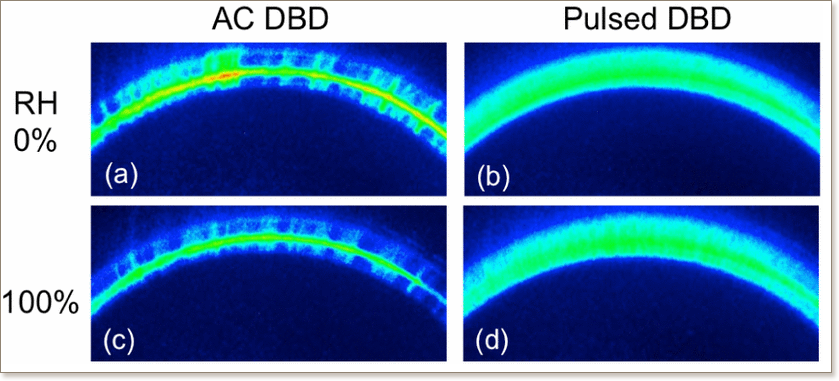

X. Zhang, B. J. Lee, H. G. Im, M. S. Cha
IEEE Trans Plasma Sci, Vol. 44, pp. 2288-2296, (2016)

Ozone synthesis in air dielectric barrier discharge (DBD) was studied with an emphasis on the effects of power sources and humidity. Discharge characteristics were investigated to understand the physical properties of plasma and corresponding system performance. It was found that 10-ns pulsed DBD produced a homogeneous discharge mode, while ac DBD yielded an inhomogeneous pattern with many microdischarge channels. At a similar level of the energy density (ED), decreasing the flowrate is more effective in the production of ozone for the cases of the ac DBD, while increased voltage is more effective for the pulsed DBD. Note that the maximum ozone production efficiency (110 g/kWh) was achieved with the pulsed DBD. At the ED of ∼ 85 J/L, the ozone concentrations with dry air were over three times higher than those with the relativ humidity of 100% for both the ac DBD and pulsed DBD cases. A numerical simulation was conducted using a global model to understand a detailed chemical role of water vapor to ozone production. It was found HO2 and OH radicals from water vapor significantly consumed O atoms, resulting in a reduction in ozone production. The global model qualitatively captured the experimental trends, providing further evidence that the primary effect of humidity on ozone production is chemical in nature.